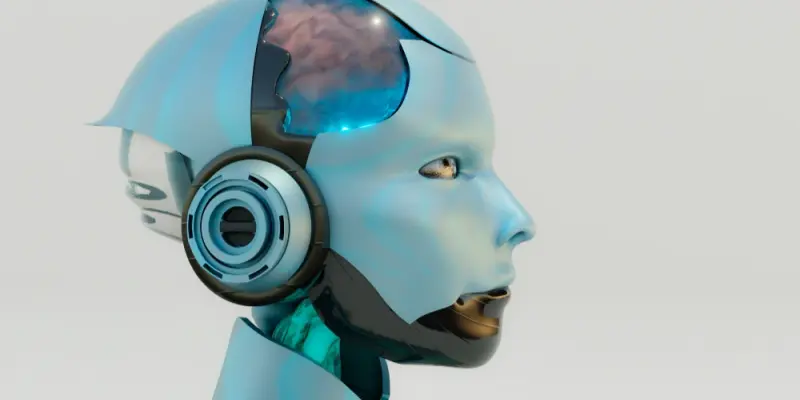The rapid acceleration of capital expenditure (capex) in the Artificial Intelligence sector, driven predominantly by the biggest technology companies known as hyperscalers, has sparked considerable debate about its future trajectory. These industry giants, including Alibaba, Alphabet, Amazon, Meta, and Microsoft, are forecast to invest a staggering $350 billion in developing AI capabilities this year. This surge in financial commitment highlights the potential for monumental advancements, yet raises critical questions about the sustainability of such investments and whether the peak of AI capex is approaching. A compelling comparison is often drawn with the dot-com boom of the late 1990s, a period marked by fervent investments that eventually led to a significant market correction. This historical parallel raises the possibility that AI capex might necessitate reevaluation and perhaps a pullback to avoid witnessing a similar economic downturn.
Understanding Historical Capex Trends
Financing Models and Economic Resilience
Exploring the trends of capex in the AI sphere reveals that during the dot-com boom, numerous technology ventures relied heavily on debt financing. Such dependence exacerbated the crash as these entities struggled to meet their financial commitments once the market turned. In contrast, today’s hyperscalers primarily fund their capex endeavors through profits, providing them with a sturdier economic foundation. While this profit-driven approach might initially appear sound, it is crucial to acknowledge that the capex to revenue ratio has reached an unprecedented level. Historically, these companies dedicated 12.5% of their revenue toward capital expenditures in recent years. However, the proportion is currently nearing 22%, surpassing typical figures and igniting discussions about the viability of maintaining this level of expenditure.
Cloud Revenue and AI Chip Depreciation
The landscape of cloud revenue growth, along with the potential accelerated depreciation of AI chips, further complicates the situation for hyperscalers. Cloud services, a significant revenue stream for these companies, have shown signs of decelerating growth, which could result in diminished returns on their hefty capex investments. Additionally, AI chips, a foundational element for many AI applications, may experience faster-than-anticipated depreciation, thus potentially affecting profitability. These dynamics may collectively exert downward pressure on earnings, challenging the sustainability of current capex levels. The interplay of these factors underscores the need for a strategic reevaluation to ensure the long-term financial health and competitive standing of these technological behemoths in an evolving market landscape.
Navigating Global Trade and Market Dynamics
Geopolitical Tensions and Trade Uncertainties
The global trade environment introduces a myriad of complexities that could significantly impact future capex strategies in the AI sector. Geopolitical tensions and trade uncertainties, such as potential trade conflicts and altering international agreements, present substantial challenges. These factors may lead to heightened costs and increased operational risks for companies striving to maintain a competitive edge in the global market. Such conditions could necessitate a more conservative financial approach from hyperscalers, compelling them to reassess their current capex strategies to mitigate potential risks. The interplay of global political dynamics and economic uncertainties presents a formidable challenge for companies trying to sustain their ambitious growth trajectories in the face of shifting global landscapes.
Lessons from the Telecom Sector
Drawing from historical parallels within the telecom sector during the early 2000s offers valuable insights for stakeholders in the AI industry. The telecom investment surge eventually witnessed a downturn resulting from similar analytical observations, emphasizing the need for cautious optimism in current AI investments. Acknowledging that capex ratios often revert to historical norms, there is the possibility of a forthcoming reduction in AI investments. The resilience displayed by today’s hyperscalers, who have leaned on cash flows rather than debt, suggests that any potential contraction might not mirror the drastic corrections seen in past industries. As the sector moves forward, integrating lessons from the telecom downturn could foster more informed decision-making and improved financial prudence.
The Potential for Stabilization and Growth
Opportunities for Balanced Development
Despite the current upheaval and uncertainties surrounding AI capex, the potential for stabilization and balanced development remains. The industry might be on the brink of its first major reset, a process often necessary for sustainable growth. Following such resets, technology often emerges stronger and more resilient, as seen with the rise of new dominant players in the post-dot-com era. This possibility suggests that the industry could evolve into a more stable and mature state after navigating the current challenges. The adaptability of companies in response to emerging market shifts could determine their future success and their ability to harness new opportunities for growth.
Future Outlook and Strategic Adaptation
The ongoing turbulence and uncertainties surrounding AI capital expenditures present both challenges and opportunities for the industry. Despite the current disruptions, there remains a significant potential for achieving a stable and balanced progression. This turbulent phase might signal the industry’s first major recalibration, a crucial step often needed to secure long-term growth. Historically, such resets have paved the way for technology to re-emerge more robustly and with greater resilience, much like the transformation seen in the tech landscape after the dot-com bubble burst. This historical precedent indicates the possibility that the AI sector could mature into a more stable and sophisticated field post-current adversities. The key factor in determining future success will be how companies adapt to shifting market dynamics. Their ability to respond effectively and seize emerging opportunities for innovation and expansion will be critical. Embracing these changes could well define how companies harness growth in the evolving AI landscape.

